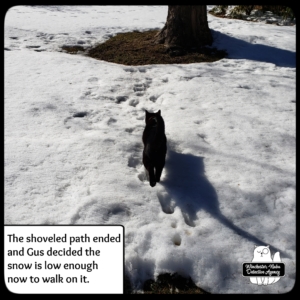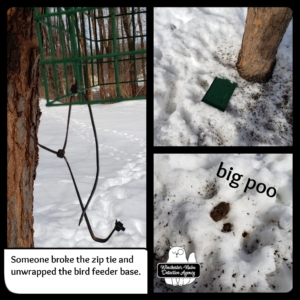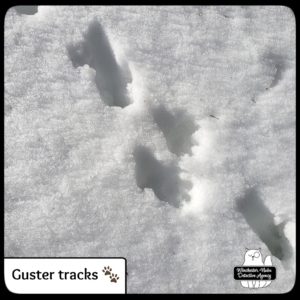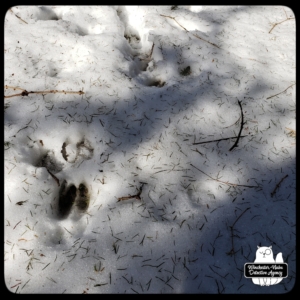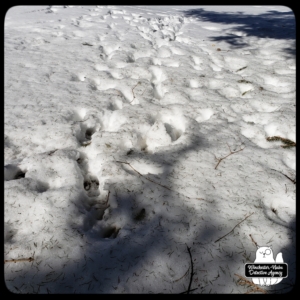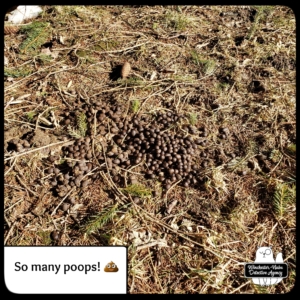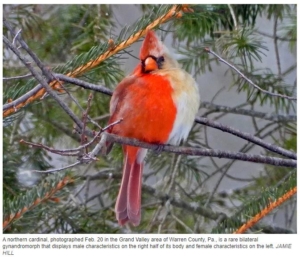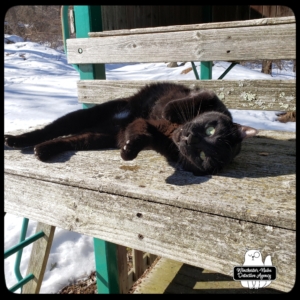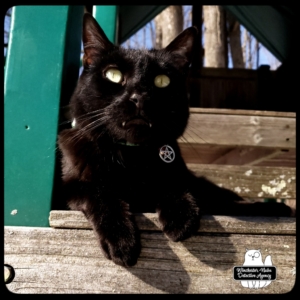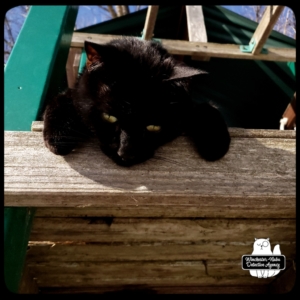Winchester-Nabu Detective Agency Year Four:
Case File No. 43-199
AMBER LOVE 08-MAR-2021 Find out how all this began. Catch up on Year One, Year Two, Year Three, and Year Four cases at the Winchester-Nabu Detective Agency.
This work is supported by the generous backers who adore my cat stories at Patreon.com/amberunmasked and they also get first access to what’s happening with my books and podcast. For a one-time tip, you can go to the new PayPal.me.
Where We Left Off:
There’s been a lot of mousing inside the residence and offices of the Winchester-Nabu Detective Agency. Not all perpetrators survived.
Splice:
Oliver Winchester has been waiting for a juicy case to emerge. He needs something to tantalize his little grey cells. Gus has been bored. He tends to get himself into trouble when he’s this bored. It often results in knocking things off tables. We were desperate for a new case.
The Grumpy Old Man reported that there were five beasts in Gnome Grove one night. I have been putting out corn cobs, bird seeds, and peanuts hoping it would be enough to keep the beasts from starvation. I was shocked to hear that there were five of them. Based on the tracks in the deep snow, these beasts are a family of Jersey devil-deer, the hybrid of Jersey demon crossed with white-tailed deer.
Genetics & Stuff:
In the feline breeding world, hybrids are referenced as F1, F2, etc. to classify how many generations an animal is from the original breed. The Filial abbreviation system that Savannah breeders use wasn’t even applied correctly from the beginning so as far as those are concerned, you have to know the Savannah specific F system to truly understand what a breeder or owner is talking about. F1 indicates that a litter is the off-spring of the African serval.
What we’ve decided to do with our devil-deer research is adopt the Savannah Filial system. An F1 devil-deer hybrid would therefore have one parent that is a Jersey devil and one parent that is a white-tailed deer. Due to the decrease in purebred Jersey devils (also called demons) in the wild, most cases will therefore be about the hybrid offspring the devil-deer. The Savannah Cat Association website has a useful table to show what subscript to classify a litter. For example, if an F1 parent mates with an F5 parent, the off-spring are F2. It’s a little bit of this and more of that then chromosomes do stuff and you have Jersey devil-deer running around the suburbs.
The Grumpy Old Man said the five beasts he watched were all female (does). But, we know that white-tailed bucks lose their antlers yearly and grow them back bigger with age. This leads me to believe that it’s more likely the family he saw had at least one buck still being guided by its mother.
Speaking of sex chromosomes, I also learned about a truly fascinating natural occurrence in birds. A Pennsylvania man took a photo of a cardinal with bilateral gynandromorph characteristics! He was about an hour from the city of Erie. This unique type of cardinal was also spotted in 2019. These birds were split down the middle with the right side showing different sex traits than the left side. It’s as if a line was drawn through the sagittal plane of these birds.
This brings up the question as to whether an animal with bilateral gynandromorph traits can reproduce. The answer is probably. When it comes to the cardinals, the hormones may change with the seasons and only one ovary is needed.
It’s also worth noting that we think it’s uncommon because of visual cues. The male and female cardinals are easily distinguishable because of their colors. Could that mean that an animal such as a deer possibly have this bilateral gynandromorphism since the main visual cue is antlers and size? I think it’s worth investigating and the cats agree. Is it possible that some day there will be photographs of a deer or devil-deer with antlers on one side of the head? I think it’s possible. The bilateral segmentation (split down the middle) isn’t the only way this appears. When the sex trait related tissues are in patches anywhere in the body, it’s call mosaicism.
According to Natural History Magazine:
Gynandromorphs occur in insects, spiders, crustaceans, and other arthropods as well as in birds, but they are extremely rare, and discovering one in the field or in the laboratory is a major event. Estimating how frequently they occur is difficult because they usually go unnoticed in species where sexual dimorphism is less pronounced. Gynandromorphs have been reported in mosquitoes, fruit flies, and in other insects, but they are most dramatic in those butterfly species in which the male and female wing colors and patterns are dramatically different.
Several years ago, news spread worldwide that there was a gender fluid lion. Mmamoriri lives in Botswana. The lion is referred to as a lioness or “she” by humans. I doubt she cares about English pronouns at all. Mmamoriri was first noticed in 2012, but a later BBC documentary brought this Leo into the spotlight. Research scientists were able to get a blood sample from her and live to tell about it. Researcher Robynne Kotzee was documenting all the lions of a particular pride. She described Mmamoriri as a large, striking lioness with a black mane.
Kotzee wrote:
Mmamoriri is not the first of the western pride to sport a mane, nor is she the only maned female on Chief’s Island in the Okavango Delta, Botswana. Martina, her predecessor, was regularly sighted around Mombo, and while her mane was much blonder, it was equally impressive. Recently, in one of the more southern prides on the concession, another young female has been spotted flaunting the first few tufts of a maturing mane. While this is not the norm, there has been an increase in reported incidences of these unusual felines on and around Chief’s Island over the last few years.
Now that there’s obvious proof in mammals have gender fluidity, I don’t see why Jersey devil-deer or white-tailed deer would be an exception. So there. It happens in humans, crustaceans, birds, insects, and other mammals. There’s no reason to think it wouldn’t also occur in the Cervidae family.
Case Findings:
Based on our examination of the tracks in the snow and eyewitness accounts, we know a small herd of Jersey devil-deer are close. Though this isn’t a criminal investigation case, it is a research case. We’ll see what spring has to reveal about whether this was an all-female family or not.
Case Status: Open


